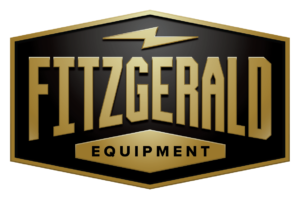
Driving a forklift on a grade, whether a ramp, slope or climb, is a key skill for most industrial and construction settings. Ramps are often necessary for moving materials between different levels, but using them with a forklift may require additional knowledge.
Tips for Safely Driving a Forklift on a Ramp
Forklift operators must consider several factors before driving on a grade with or without cargo. Follow these general rules and safety practices to prevent tip-overs, load loss and injury.
Assess the Grade
Confirm whether the ramp or slope is the correct size for your forklift and verify that its weight limit can handle your equipment and load if applicable. You should also inspect its state and look for cracks or damage that could lead to collapse.
You should also know the grade percentage you’ll be driving through. The Occupational Safety and Health Administration (OSHA) defines any surface with a grade over 10% as a ramp, incline or slope. You can calculate an incline grade by dividing the height of the rise by the length of the run and multiplying the result by 100.
Know Your Equipment
Your equipment’s operator manual is the best tool for determining how to operate heavy machinery in any situation. Follow your forklift’s manual and identify the maximum allowable slope. Check the gradability rating and compare it with the grade percent of the ramp.
Additional Precautions
Operating a forklift requires more precautions when driving it through a ramp. You should keep a slow speed and avoid sudden directional changes. These precautions will ensure you keep balance and have extra time to stop safely, maintaining a safe environment for you and the workers around you.
OSHA’s Recommendations
OSHA sets specific ramp safety guidelines for operators. These requirements are designed to promote a safe work environment and prevent equipment damage and cargo loss. These recommendations include:
- General guidelines: Operators should always look in the direction of travel, position the forks properly before reaching the ramp and keep a safe distance from the edge.
- Driving with cargo: Operators should always drive with the load pointing up the incline and use a spotter if the load blocks the driver’s view.
- Driving without cargo: Operators should always drive with the forks pointing downgrade and follow general guidelines.
Become an Expert With Our Forklift Training Courses
Partner with Fitzgerald Equipment to become an expert in forklift operation. We provide forklift training courses that fulfill all OSHA requirements, whether you need a refresher course on how to drive a forklift on a grade or a complete certification. Contact us today and learn more about our training options.




